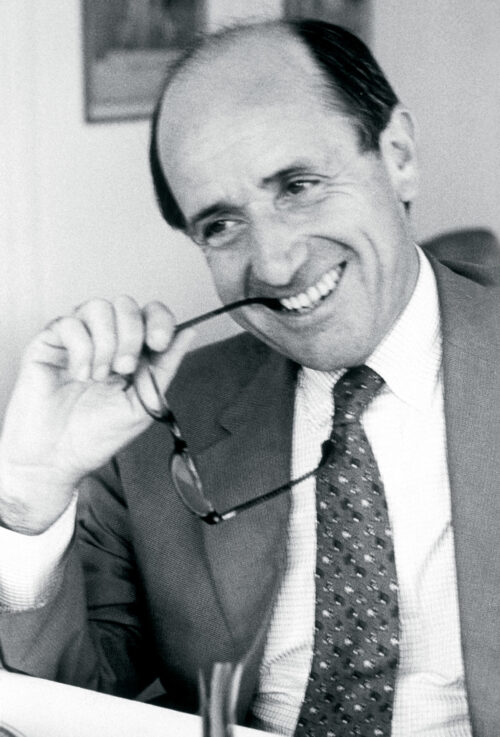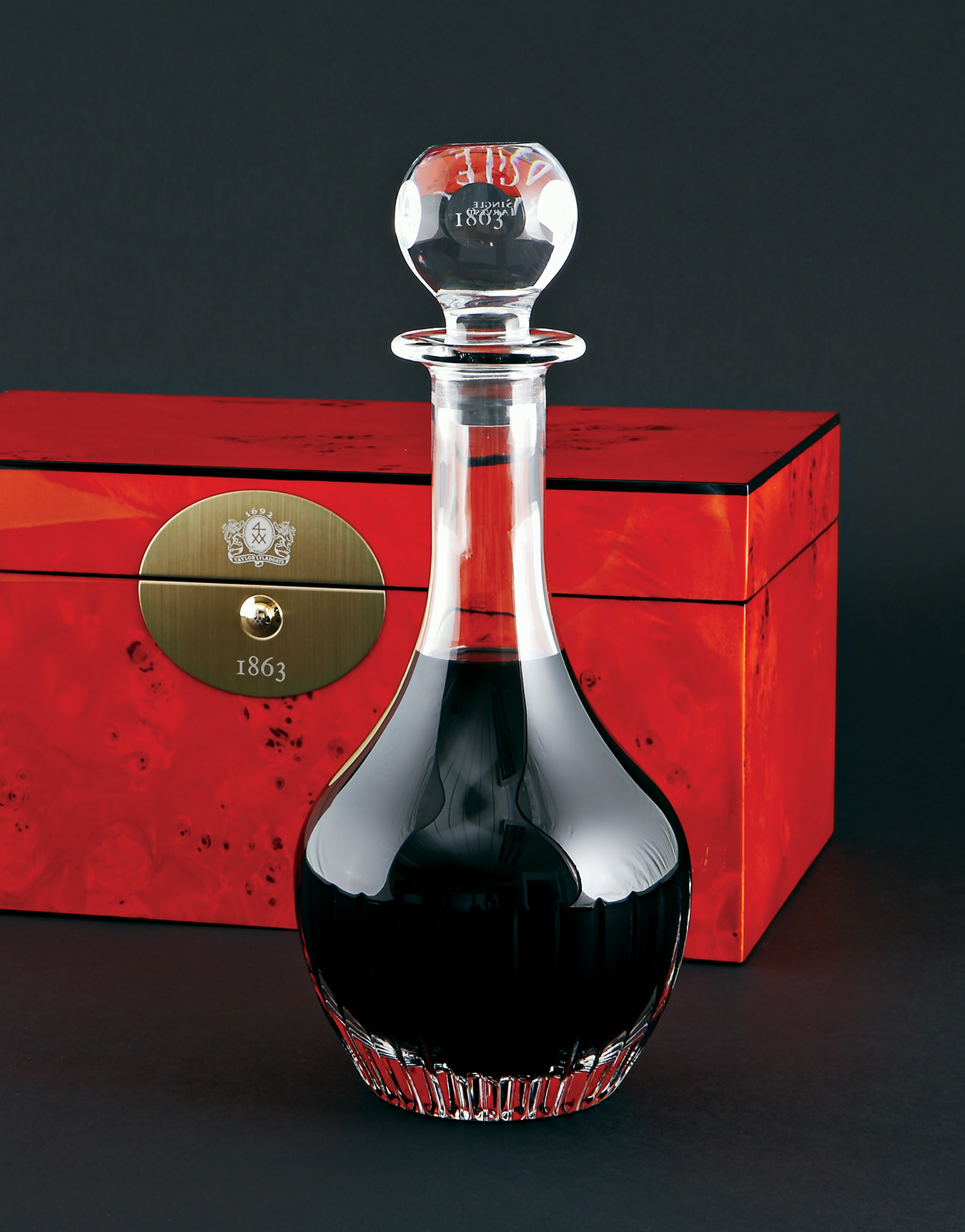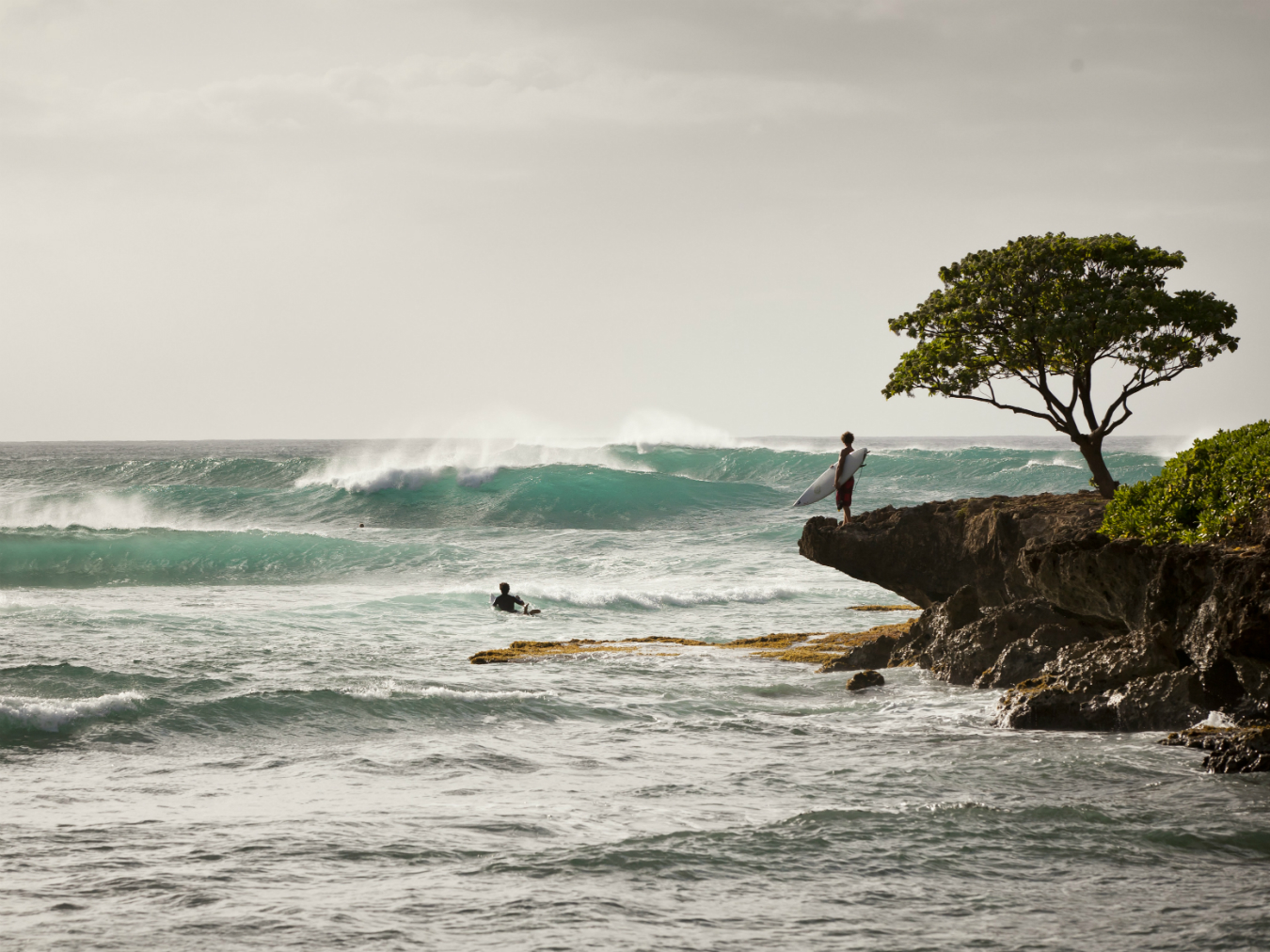
How Nic von Rupp Built a Big Wave Dream Team to Tackle Nazaré
The Portuguese big wave surfer, along with his Mountains of Sea crew backed by Tudor, pushes the limits of the sport one towering wall of water at a time.
What calls a surfer to the heart of a storm? For Nic von Rupp, it isn’t the adrenaline high. Rather, it’s about learning to stay calm in chaos, to make peace with fear, and to meet nature’s rawest force on its own terms. “Surfing is a metaphor of life,” he says. “Everyone has a big goal, their big waves. There’s always challenges in the middle. There’s fear in life, whatever you’re doing. There’s always a doubt—am I going to survive another day?”
In the world of big wave surfing, von Rupp is a legend—not just for the waves he rides but also for how he rides them. With a calculated blend of fearlessness and finesse, he’s carved out a reputation as one of the most respected and relentless big wave surfers of his generation. Where most see danger, he sees possibility. He’s built a career not on hype but on performance, commitment, and an almost spiritual connection with the ocean.
As a child, von Rupp confesses, he was “scared of the ocean, scared of the water.” It’s hard to imagine now—one of the world’s most respected big wave surfers, once nervously standing on the shore. Born in Lisbon to a Swiss mother and German American father, he grew up in Sintra, Portugal. Despite his proximity to some of Europe’s most powerful surf, the ocean felt foreign to him. Even so, as most kids in the region do, he began bodyboarding. At the time, a coach named João Macedo “taught me how to surf,” he says. “He went to my house and convinced my parents that I should surf.” (Macedo is still part of von Rupp’s coaching team.) By his early teens, von Rupp was not just comfortable in the water, he was excelling. His natural talent was undeniable, and he quickly climbed the ranks of competitive surfing, winning national titles and gaining international recognition. In his early 20s, he made the switch to big wave surfing.

Big wave surfing emerged in the 1950s on the North Shore of O’ahu, Hawaii, where pioneering surfers like Greg Noll began pushing the boundaries of what was possible. In the decades that followed, the sport evolved from a fringe daredevil pursuit to a technically demanding discipline. The turning point came in the 1990s, when surfers started to use Jet Skis to access waves previously too fast or too large to paddle into. This opened the door to riding truly massive waves, and no place has redefined the limit of the sport like Nazaré. “Nazaré is absolutely the biggest wave in the world,” von Rupp states. “There are big wave spots around the world—places like Jaws in Hawaii, Mavericks outside of San Francisco, they reach up to 10 metres. In Nazaré, we’re surfing waves that are close to 30 metres.”
On the rugged Atlantic coast of Portugal, Nazaré is regarded as the world’s premier big wave destination. “What’s so specific about Nazaré is that there’s an underwater canyon,” von Rupp explains. “It’s pretty much a submerged Grand Canyon, where swells gain speed and energy.” In technical terms, a vast underwater chasm nearly 5,000 metres deep and over 200 kilometres long funnels Atlantic swells straight toward shore, amplifying their size and power. The result is towering, vertical walls of water that break shockingly close to land. Perched dramatically on a rocky headland, where the cliff plunges into the Atlantic, the Fort of São Miguel Arcanjo stands watch over the sleepy fishing village. Built in the 16th century to guard against pirate attacks, the fort served for centuries as a military outpost. “This went from a fishing village where no one showed up to now a hub of tourists. The first time I came here was with my dad,” von Rupp recounts, looking out to the water. “There was a wave breaking, and it looked like it was going to take out the lighthouse.”
The Tudor Nazaré Big Wave challenge is an annual event that runs in the window between November and March, when the Atlantic storms generate massive swells. When conditions look promising, the World Surf League issues a Yellow Alert up to 72 hours before the potential competition day. If forecasts stay favourable, a Green Alert is issued 24 hours in advance, confirming the event is a go, giving surfers and their support teams the window to mobilize. “We tend to say in surfing ‘it’s on when it’s on,’ ” von Rupp says, “whenever Mother Nature collaborates. We need big waves, we need perfect winds, and we wait from November until March for the perfect day.” Some 50,000 people gather on the cliffs and beaches for a front-row seat to the awe-inspiring spectacle of big wave surfing. The crowd stretches along the headland of the Fort of São Miguel Arcanjo, watching the live theatre of noise, wind, and power.
___
In the world of big wave surfing, Nic von Rupp is a legend—not just for the waves he rides but also for how he rides them. With a calculated blend of fearlessness and finesse, he’s carved out a reputation as one of the most respected and relentless big wave surfers of his generation. Where most see danger, he sees possibility.
Von Rupp has won the Tudor Nazaré Big Wave challenge more than once, the latest being the 2025 prize. Big wave surfing may seem to be an individual sport, but it relies on a well-coordinated team: the athlete who rides the massive wave along with a teammate who drives the Jet Ski into the wave to catch it at the right moment. (Paddling is impossible at Nazaré. It is a tow-in style requiring coordination with Jet Skis.) Clément Roseyro—the water man from Biarritz, France—is von Rupp’s teammate, and additional crew are positioned along the cliff to keep an eye on von Rupp and provide emergency support during wipeouts and hold downs. The extended team includes coaches, medical staff, and logistics personnel who help with equipment and communication.

“You’ve got to be 100 per cent sure in what you are doing,” von Rupp says of his discipline. “It’s a very dangerous sport. When the wave gets really big, it doesn’t break top to bottom—it doesn’t barrel like other places. We need to adapt to what nature has on offer.” While the sport is evolving in terms of safety, “We’re all learning. We’re all understanding where the limits are,” he says. One recent invention has become a lifesaver: the inflatable surf vest. These vests are equipped with CO2 canisters with pull cords that the surfer can activate during a hold down and once triggered help you come up to the surface.
Von Rupp looks every bit the archetype of a surfer: crystal blue eyes that draw you in, skin bronzed by years under unforgiving sun, and a mop of dirty-blond hair that falls in perfect disarray, each salt-crusted tress testament to hours spent in the ocean. But there’s more behind the beach-blessed exterior. Beneath the laid-back image is a mind constantly reading tides, wind, and consequences. “We can control what we can control,” says the 35-year-old, “which is preparation, team work, hard work, and spending hours in the water.”
Last year, von Rupp created Mountains of the Sea, a big wave surfing project that pushes the boundaries of big-wave surfing at Nazaré but also beyond, exploring new, uncharted big waves in remote locations. “We are looking for the Nazarés around the world,” he says of this new initiative. “We went to Iceland this year, minus 10 degrees freezing cold conditions. We’re scouting potential locations that might have big waves. Next, we are planning Greenland, a place that has never been surfed before. The ocean still has a lot to be discovered.” Mountains of the Sea is also a multimedia project that documents the team’s expeditions. Von Rupp is also continually posting shorts on YouTube, and his series Portugal – Back to Back, available on Prime, and Thin Line With Nic von Rupp, on Amazon, offer not just adrenaline but also insight into the discipline. Content is key in this adventure sport, and von Rupp is grateful for Tudor—the Swiss watch brand with deep ties to sport—as sponsor not just of Mountains of the Sea but also for his role as brand ambassador. Tudor’s mantra is Born to Dare, and von Rupp embodies that in the most literal way. “I’m surfing with my watch every day, even in competition” he says, referencing his Pelagos. “I had the worst wipeouts, rode the biggest waves of my life with this watch. There’s an emotional attachment.”

At the red-domed lighthouse at the Fort of São Miguel Arcanjo in Nazaré, a surf museum has taken shape. Tourists visit throughout the year not just for the panoramic views but also to set foot in the temple to the sport’s heroes. Broken boards, helmets, tow-in vests, and other wave-scarred equipment, as well as photos from legendary surf sessions, decorate the walls. There’s a board belonging to Garrett McNamara, credited with having brought Nazaré to global attention, riding a 23.8-metre wave in 2011—a Guinness World Record at the time. Others belong to local legends, including von Rupp.
In a sport where hesitation can cost you your life, von Rupp’s clarity of purpose sets him apart. Surfing the big wave “reminds you to stay humble. It’s good having dealt with that superior power of nature. It keeps you on your toes, keeps you grounded knowing there’s something stronger than you and can crush you from one second to the other if you are not humble and respecting. The ocean is powerful, very powerful, and it makes sure to show you.”
So what calls a surfer to the heart of a storm? It’s obsession, control in chaos, and as von Rupp says, “turning fear into fuel and moving forward. Daring to step outside of your comfort zone and achieving a better version of yourself.”




